Endangered kakapo parrot gets pioneering brain surgery
- Published
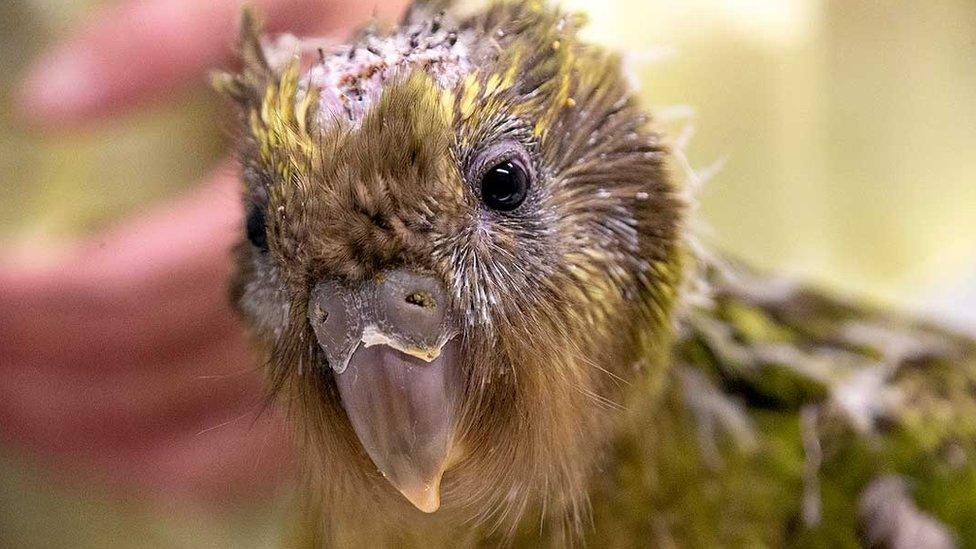
Kakapos - the world's fattest species of parrot - are flightless and nocturnal
Vets in New Zealand have performed life-saving brain surgery on a critically endangered kakapo parrot in a world-first procedure amid efforts to save the species.
Surgeons adapted techniques used on humans and other mammals to operate on the 56-day-old chick, which had a hole in its skull.
The species, native to New Zealand, has been decimated by poaching, habitat loss and predators.
There are now just 144 kakapos, external left.
The chick, known as Espy 1B, was hatched on Codfish Island in southern New Zealand and was in the care of the Department of Conservation's Kakapo Recovery Team when rangers noticed an unusual lump on its skull.
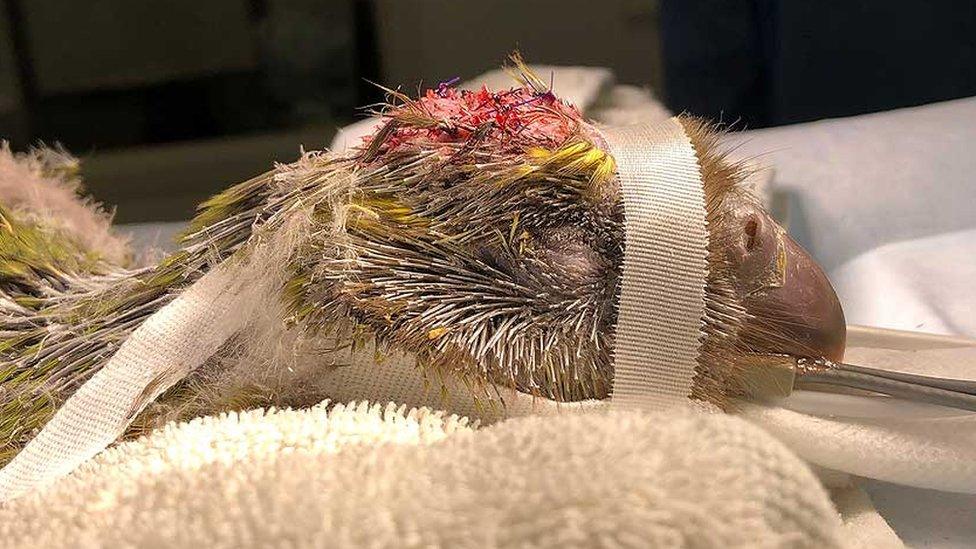
The bird was flown for free by the country's national airline to Massey University's Wildbase Hospital where the pioneering procedure took place.
In a statement, the director of the hospital, Professor Brett Gartrell, said there was only a thin layer of tissue between the chick's brain and the outside world.
The hole "allowed part of the brain and dura (the tough barrier around the brain) to herniate out,", external he said.
He said the "risky" brain surgery was necessary to save the bird, but that "nothing like it had been attempted before in avian medicine."
The surgery, carried out last week, was a success, and Wildbase says the chick is making a "remarkable recovery".
Kakapos - the world's fattest species of parrot - are flightless and nocturnal.
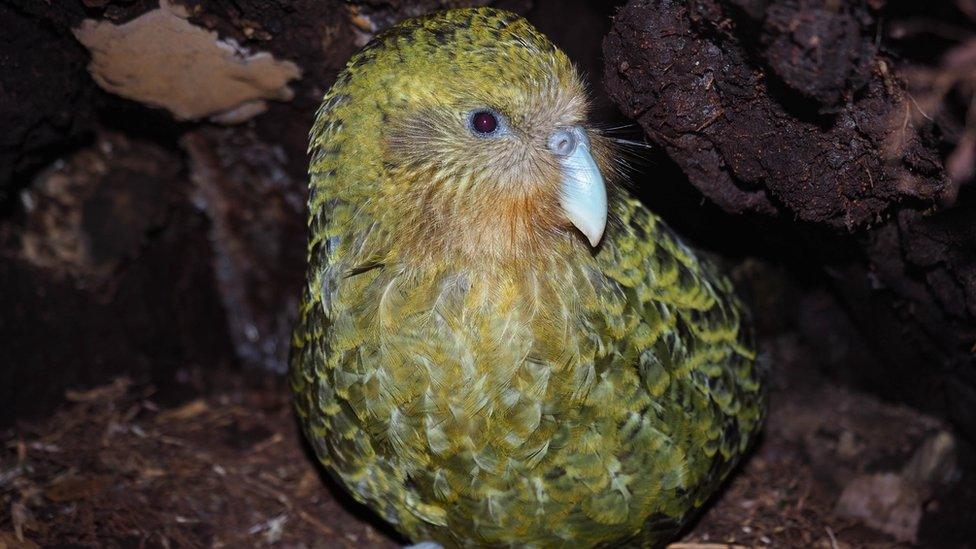
There are few kakapos left in the wild
They used to be one of New Zealand's most common birds but are now classed as "critically endangered" by the International Union for the Conservation of Nature (IUCN), external, which compiles a "red list" of threatened species.
The species recently had its most successful breeding season on record.
- Published3 May 2019
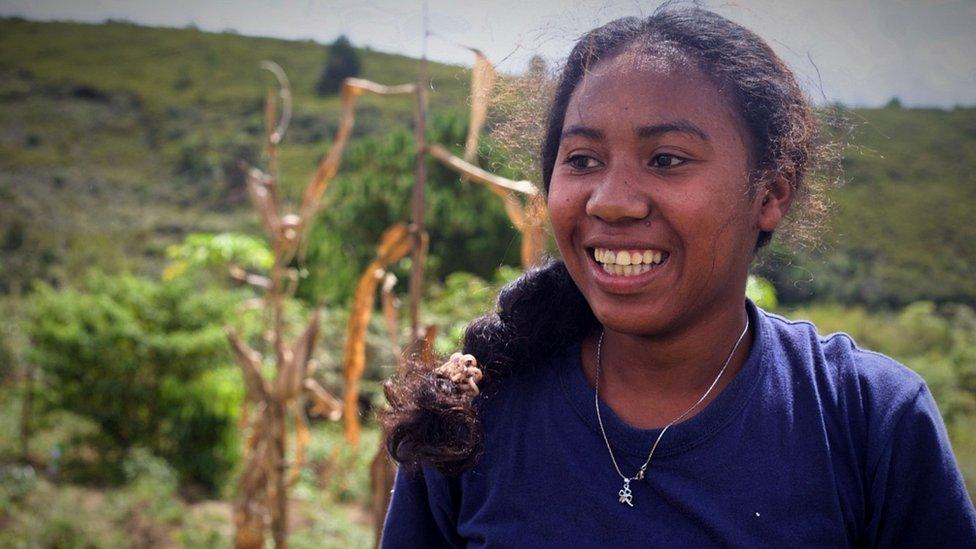
- Published5 May 2019
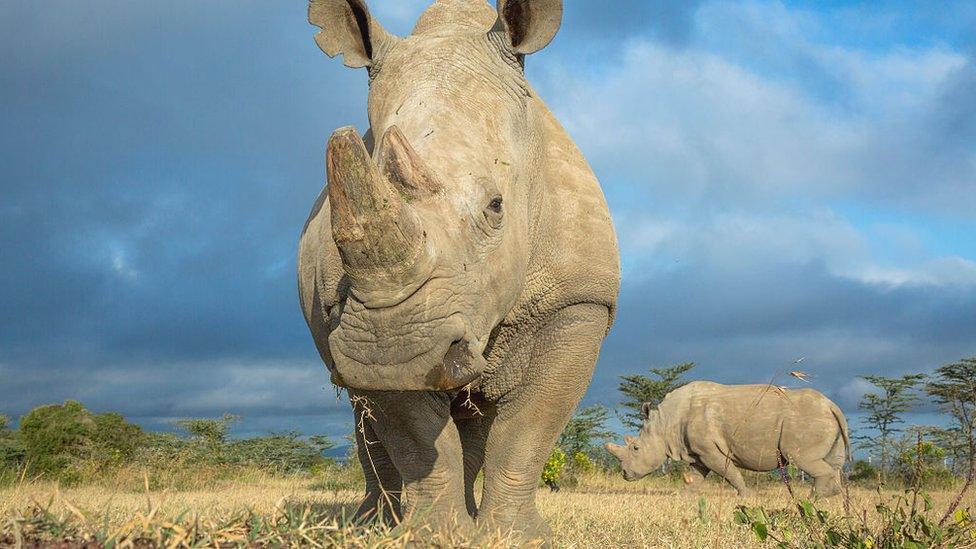
- Published27 April 2019
